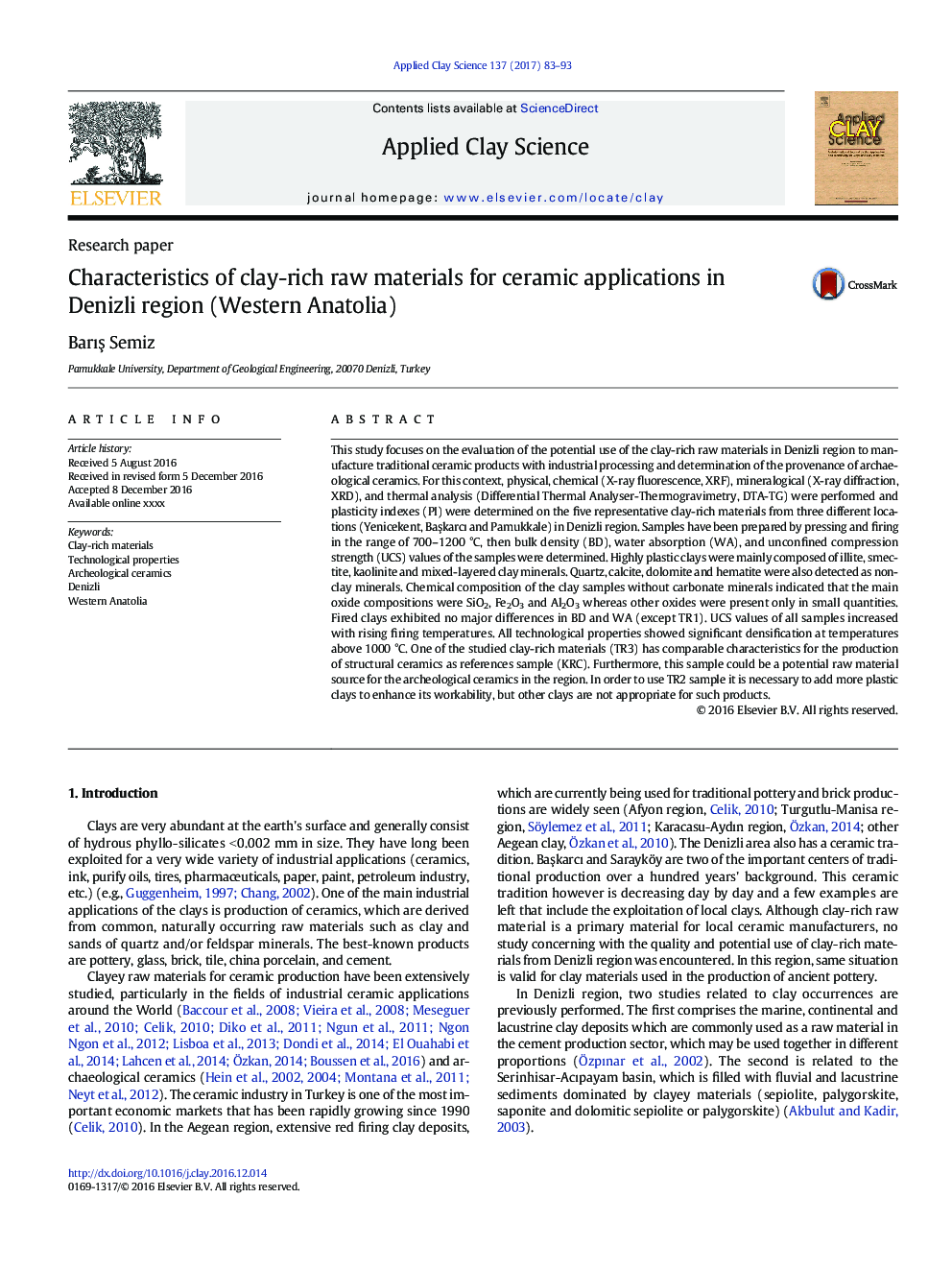| کد مقاله | کد نشریه | سال انتشار | مقاله انگلیسی | نسخه تمام متن |
|---|---|---|---|---|
| 5469031 | 1519051 | 2017 | 11 صفحه PDF | دانلود رایگان |
عنوان انگلیسی مقاله ISI
Characteristics of clay-rich raw materials for ceramic applications in Denizli region (Western Anatolia)
ترجمه فارسی عنوان
ویژگی های مواد خام غنی از خاک رس برای کاربرد سرامیک در منطقه دنیسلی (آناتولی غربی)
دانلود مقاله + سفارش ترجمه
دانلود مقاله ISI انگلیسی
رایگان برای ایرانیان
کلمات کلیدی
مواد غنی از خاک رس، خواص فن آوری، سرامیک باستان شناسی، دنیزلی، آناتولی غربی،
موضوعات مرتبط
مهندسی و علوم پایه
علوم زمین و سیارات
ژئوشیمی و پترولوژی
چکیده انگلیسی
This study focuses on the evaluation of the potential use of the clay-rich raw materials in Denizli region to manufacture traditional ceramic products with industrial processing and determination of the provenance of archaeological ceramics. For this context, physical, chemical (X-ray fluorescence, XRF), mineralogical (X-ray diffraction, XRD), and thermal analysis (Differential Thermal Analyser-Thermogravimetry, DTA-TG) were performed and plasticity indexes (PI) were determined on the five representative clay-rich materials from three different locations (Yenicekent, BaÅkarcı and Pamukkale) in Denizli region. Samples have been prepared by pressing and firing in the range of 700-1200 °C, then bulk density (BD), water absorption (WA), and unconfined compression strength (UCS) values of the samples were determined. Highly plastic clays were mainly composed of illite, smectite, kaolinite and mixed-layered clay minerals. Quartz, calcite, dolomite and hematite were also detected as non-clay minerals. Chemical composition of the clay samples without carbonate minerals indicated that the main oxide compositions were SiO2, Fe2O3 and Al2O3 whereas other oxides were present only in small quantities. Fired clays exhibited no major differences in BD and WA (except TR1). UCS values of all samples increased with rising firing temperatures. All technological properties showed significant densification at temperatures above 1000 °C. One of the studied clay-rich materials (TR3) has comparable characteristics for the production of structural ceramics as references sample (KRC). Furthermore, this sample could be a potential raw material source for the archeological ceramics in the region. In order to use TR2 sample it is necessary to add more plastic clays to enhance its workability, but other clays are not appropriate for such products.
ناشر
Database: Elsevier - ScienceDirect (ساینس دایرکت)
Journal: Applied Clay Science - Volume 137, 1 March 2017, Pages 83-93
Journal: Applied Clay Science - Volume 137, 1 March 2017, Pages 83-93
نویسندگان
BarıŠSemiz,
